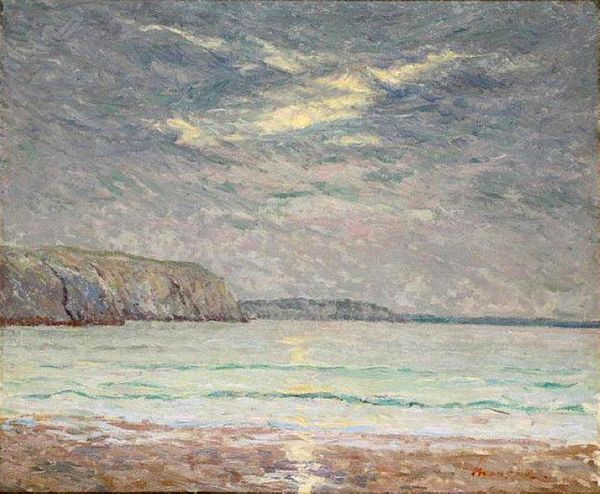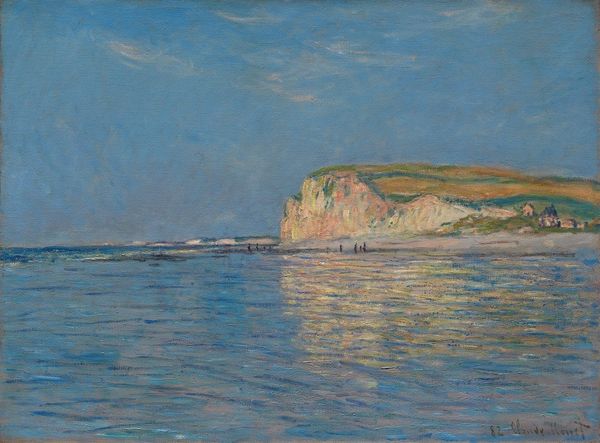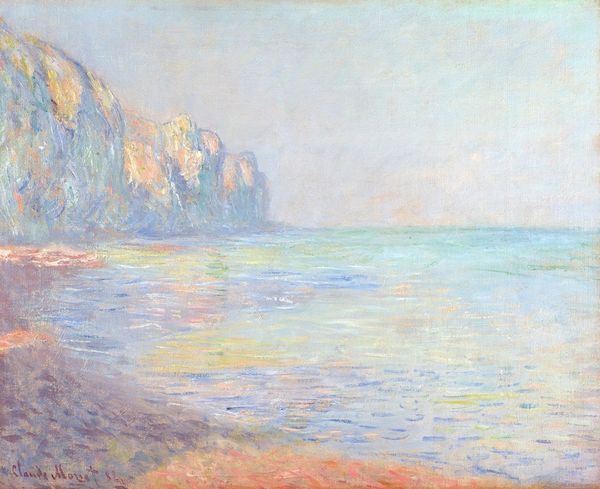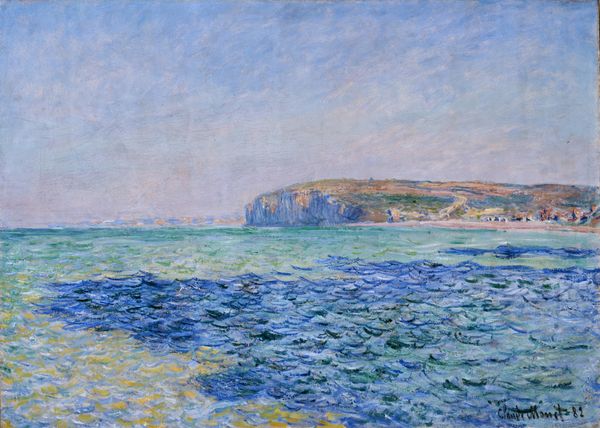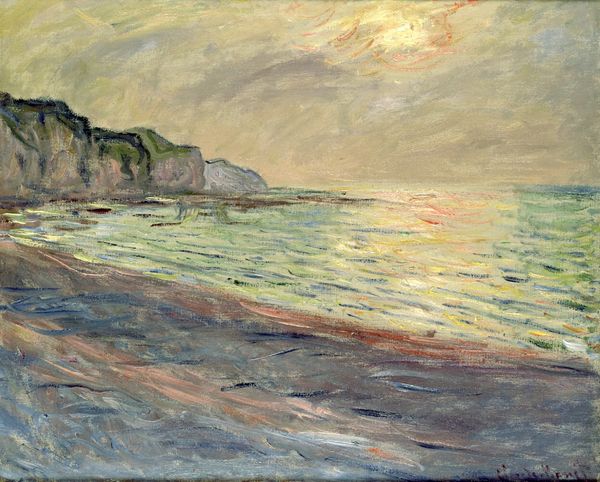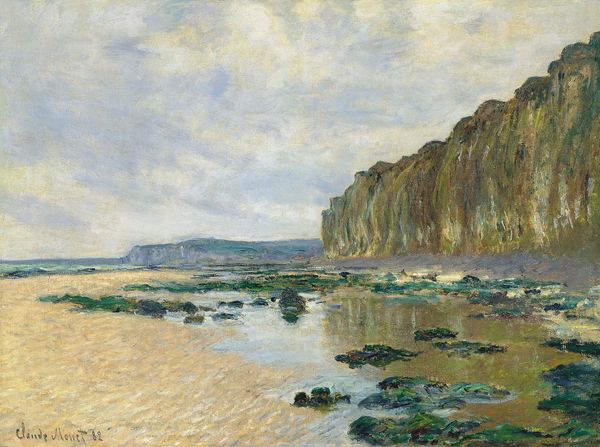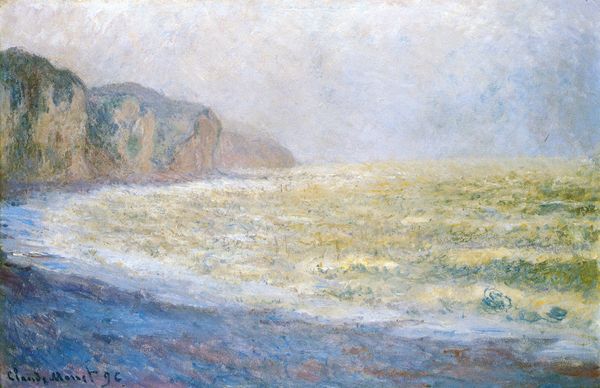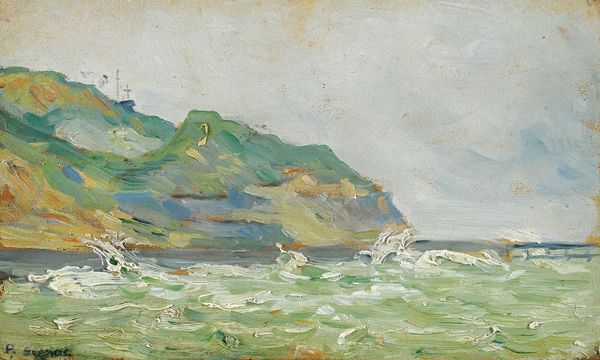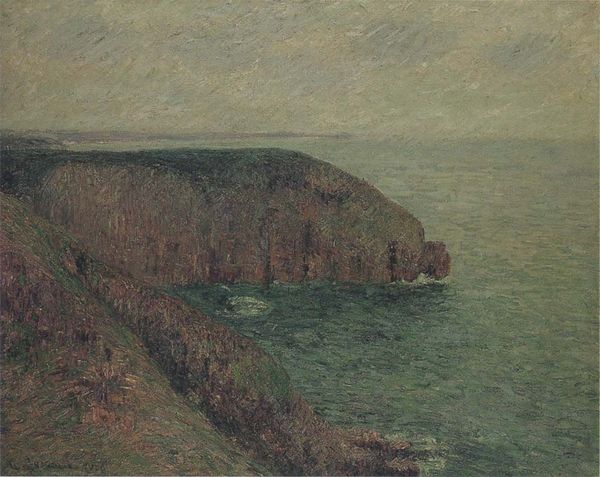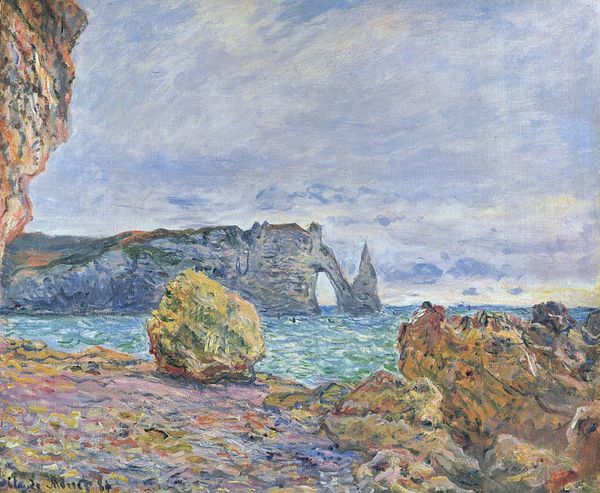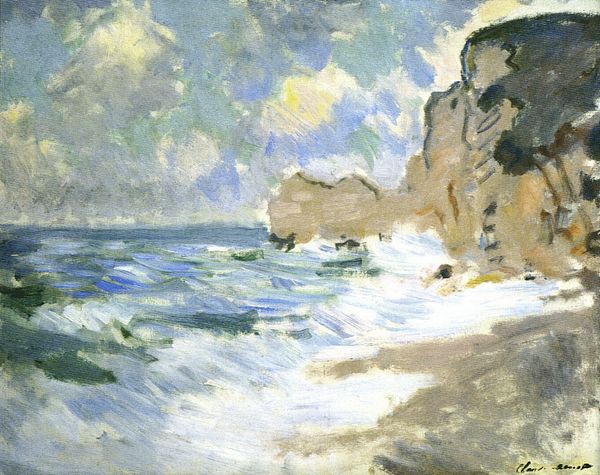
Copyright: Public Domain: Artvee
Claude Monet painted this canvas in 1896, capturing the cliffs of Pourville with oil on canvas. Here, the cliff looms large, a timeless form against the mutable sea and sky. Cliffs, in their stoic presence, have long symbolized the sublime—a place where humanity confronts the immense power of nature. Think of Caspar David Friedrich's solitary figures dwarfed by the chalk cliffs of Rügen. The cliff becomes a stage for our existential dramas, echoing the Romantic era's fascination with the awe-inspiring and the overwhelming. In Monet's hands, this motif softens, yet the cliff still evokes a sense of enduring strength. The cliff, as a symbol, evolves. It morphs from a place of spiritual reckoning to a backdrop for Impressionistic studies of light and atmosphere. This shift reveals our changing relationship with nature—from seeking profound truths to observing transient beauty. Ultimately, the cliff remains a potent image, a testament to nature’s unyielding force and our perennial quest to understand our place within it.
Comments
No comments
Be the first to comment and join the conversation on the ultimate creative platform.
